Intel Developer Forum Conference - Spring 2001: Part 1
by Anand Lal Shimpi on March 5, 2001 12:00 PM EST- Posted in
- Trade Shows
Already making improvements
If you'll remember from our IDF coverage around a year ago, we brought you the first pictures of the Itanium. The systems were pretty unique since the Itanium CPUs had power bricks sitting next to them that were just as large in size. The pictures below will hopefully refresh your memory.
The problem platform designers ran into was that this was simply too big of a design. In a data center, rack space can get pretty expensive (around $1000 USD per rack per month), and with some companies taking up close to 20 racks they obviously want to make the best use of the space they have. However sticking a dual processor Itanium setup in a 1U case (about 2" high) would be impossible. Here's where McKinley comes in.
If McKinley is indeed a 0.13-micron processor (which would make the most sense), it is inherently going to be a cooler running processor than the Itanium. The problem of heat dissipation is not completely eliminated by the fact that it is a 0.13-micron processor, since two McKinley processors will dissipate around 600W.
The design that resulted was quite ingenious. First, the McKinley processor is now integrated into a cartridge with its power supply as you can see below.
If you'll also notice, the McKinley uses the same microPGA pin layout we discussed earlier. Notice how tightly packed those pins are.
The cartridge already saves some space, but we still have the issue of getting rid of the heat. The solution to this problem was to use a very large blower at the front of the 1U rack and blow a lot of air across the two heatsinks allowing the construction of a dual processor McKinley system in a 1U case. The impeller as they call it (essentially a blower) is capable of moving 70 cubic feet of air per minute at a rotational speed of 2800 RPM.
And don't worry, there's more than enough room for memory.


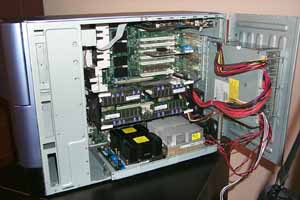
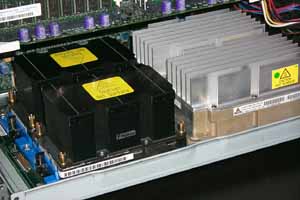
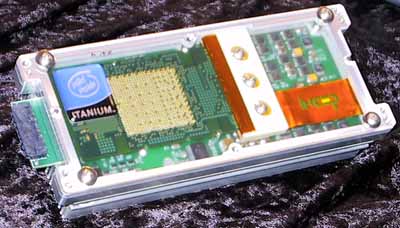
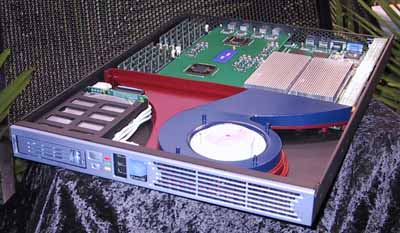
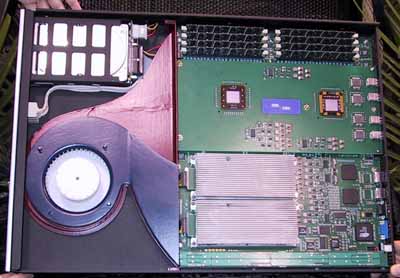








2 Comments
View All Comments